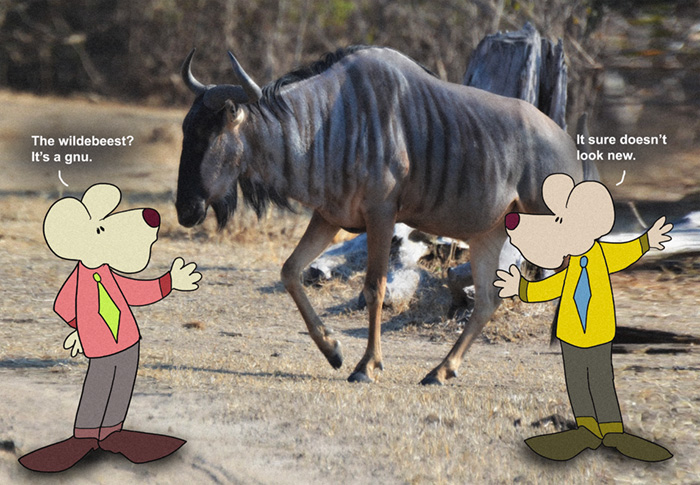Goodness, I love animals. I find the entire lot of them fascinating, incredible, and oftentimes dazzling. Each brood possesses special talents and abilities. Like squirrels, glorious squirrels. I could watch those leaping, acrobatic, bushy-tailed athletes for hours. Their feats seem implausible at times. Inconceivable. Those wild, little beasts.
But those leaping squirrels are homebodies. A gray squirrel’s home range is typically between two and seven acres. Just like me. I don’t leap, but I stick around my home. It’s where I am the happiest — bright-eyed and bushy-tailed.
Yet. Animals are all different. Many of them tend to be on the move, especially in the springtime. These migrations include everything from fish to birds. It could be any number of animals, from those who are big and shaggy, to the tiniest, sleekest insects. These journeys are as diverse as the different species of animals themselves.
One of the world’s greatest occurrences of land mammal migration just might be in Africa. Yes. In the way of the wildebeest. First, a word from our sponsor. Oh, the wildebeest. This has to be the perfect name for an animal. It is almost like Dr. Seuss himself named the things.
We don’t have them here in America, though. They are African. The population of those good beasts is stable. Currently, there are around 1,500,000 wildebeests there, give or take a few.
I suppose this number encompasses both kinds. You see, there are black wildebeests and the more common blue wildebeests. They are similar but different. The black variety is also known as the white-tailed gnu. Aptly named, they have long white, horsey-like tails, and their coats are very dark to black. The blue wildebeest is also known as the white-bearded wildebeest and is considered to be a large antelope. Its coat has a blue sheen, and they are broad in the chest. Yep. White beard.
Here is the thing I like about them. They are good-natured. They are kind to one another and are very social. I mean, even their name makes them sound like the ultimate “Party Animals.”
Anyway. The sad part? They are hunted, mostly by lions and those laughing hyenas. And, If you have ever seen a wildebeest, it can’t really camouflage itself in the African Serengeti. So, typically stick together in large groups. When they are asleep or taking a nap during the day, some of the wildebeests keep watch. And when they are attacked, their large numbers help them. Yet, they are very fast in their own right. They can run up to 40 mph. That’s about the same as your average racehorse.
Wildebeests are pretty much always on the move. They migrate as many as 1000 miles each year. To put it in perspective, that’s like walking the distance from Minnesota to Louisiana. And the places they go are not easy. Their entire migratory route is fairly dangerous. For instance. They cross two rivers during their trek, both of which are crocodile-infested.
For most of their lives, wildebeest graze in the grassy savannas and open woodlands of the Serengeti plains, around the nations of Tanzania and Kenya. (Southern portions of Africa.) Then, they migrate in an enormous loop every year. The annual trip to the northwest is recognized as one of the “Seven Wonders of the Natural World.”
I guess at the very beginning, one of those Party Animals yells, “ROAD TRIP!” and off they go.
So, yes. I love animals, from frisky squirrels to the amazingly talented, yet homely, wildebeest. Party on, my friends. Party on.
==========
“If you pick up a starving dog and make him prosperous, he will not bite you. This is the principal difference between a dog and man.”
― Mark Twain
========
“The creatures outside looked from pig to man, and from man to pig, and from pig to man again; but already it was impossible to say which was which.”
― George Orwell, Animal Farm
=========
“Man is the cruelest animal.”
― Friedrich Nietzsche
===========
What a wild beast, those party animals. All of them, really.
